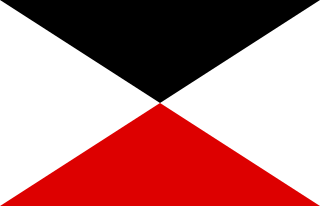
The III Cavalry Corps was a formation of the German Army in World War I. The corps was formed on mobilization of the German Army in August 1914 and disbanded in 1919 during the demobilization of the German Army after World War I.

The 2nd Army was an army level command of the German Army in World War I. It was formed on mobilization in August 1914 from the III Army Inspection. The army was disbanded in 1919 during demobilization after the war.

The 4th Army was an army level command of the German Army in World War I. It was formed on mobilization in August 1914 from the VI Army Inspection. The army was disbanded in 1919 during demobilization after the war.

The 5th Army was an army level command of the German Army in World War I. It was formed on mobilization in August 1914 seemingly from the VII Army Inspection. The army was disbanded in 1919 during demobilization after the war.

The 7th Army was an army level command of the German Army in World War I. It was formed on mobilization in August 1914 from the II Army Inspection. The army was disbanded in 1919 during demobilization after the war.

The 6th Army was an army level command of the German Army in World War I. It was formed on mobilization in August 1914 from the IV Army Inspectorate. The army was disbanded in 1919 during demobilization after the war.

The 9th Army was an army level command of the German Army in World War I. It was formed in September 1914 in Breslau to command troops on the southern sector of the Eastern Front. The army was dissolved on 30 July 1916, but reformed in Transylvania on 6 September 1916 for the Romanian Campaign. It was transferred to the Western Front on 19 June 1918 where it was finally dissolved on 18 September 1918.

The 17th Army was an army-level command of the German Army in World War I. It was formed in France on 1 February 1918 from the former 14th Army command. It served exclusively on the Western Front and was dissolved on 19 January 1919.

The 18th Army was an army level command of the German Army in World War I. It was formed against France on 27 December 1917 from the former Heeresgruppe Woyrsch command. It served exclusively on the Western Front and was dissolved on 2 January 1919.

The 19th Army was an army level command of the German Army in World War I. It was formed in France on 4 February 1918 from the former South Army command. It served exclusively on the Western Front and was dissolved on 24 January 1919.

Armee-Abteilung Gaede / Armee-Abteilung B was an army level command of the German Army in World War I. It served on the Western Front throughout its existence and formed the extreme left wing.

Armee-Abteilung Falkenhausen / Armee-Abteilung A was an army level command of the German Army in World War I. It served on the left (southern) wing of the Western Front throughout its existence.
This is the German Army order of battle on the Western Front at the close of the war.

The Army of the Bug was an army level command of the German Army in World War I named for the Bug River. It was formed against Russia on 8 July 1915 and served exclusively on the Eastern Front. It was dissolved on 31 March 1918.

Armee-Abteilung Gronau was an army level command of the German Army in World War I. It was formed from Armee-Gruppe Gronau on 18 September 1916 and was disbanded on 27 March 1918. It served on the Eastern Front throughout its existence.

The Guards Reserve Corps was a corps level command of the German Army in World War I.

The V Army Corps / V AK was a corps level command of the Prussian and then the Imperial German Armies from the 19th century to World War I.

The 54th Corps was a corps formation of the German Army in World War I. It was formed in September 1916 and was still in existence at the end of the war.

The 64th Corps (Württemberg) was a corps formation of the German Army in World War I. It was formed in January 1917 and was still in existence at the end of the war.

The 66th Corps was a corps formation of the German Army in World War I. It was formed on 9 May 1917 and was still in existence at the end of the war.



